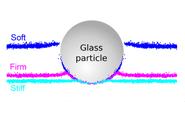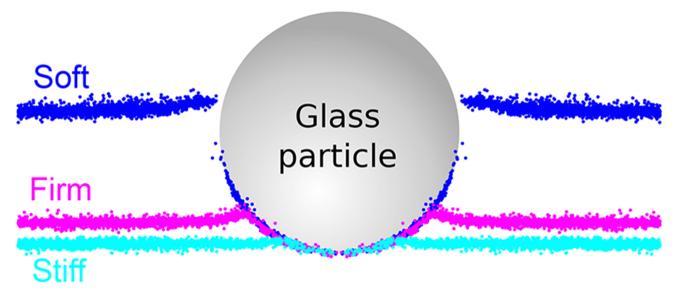Changing Our Thinking about Sticking Together

The pitch is thrown, the batter connects—crack! For a fraction of a moment, these two objects are stuck together, pulled together by adhesion energy and pushed apart by their own elasticity.
This moment of adhesion is studied by the field of engineering known as contact mechanics. By measuring things like force, elasticity, and surface area, baseball statisticians (read: engineers) can describe how the objects deform and connect using the Johnson-Kendall-Roberts (JKR) model of elastic contact, a foundational theory of the field.
 But Yale researchers led by Eric Dufresne, Associate Professor of Mechanical Engineering & Materials Science, Physics, and Cell Biology, have shown that this model doesn't always hold up. If the ball—in this case a hard, silica microsphere—is small enough and, more importantly, is thrown at a soft enough surface—such as a sticky, flat, silicone substrate—then the adhesion obeys a new set of rules. In these cases, solid surface tension, which opposes adhesion by flattening the surface of soft solids, dominates elasticity, to the point that the silicone substrate adheres to the microsphere in a manner similar to the way cream adheres to a spoon.
But Yale researchers led by Eric Dufresne, Associate Professor of Mechanical Engineering & Materials Science, Physics, and Cell Biology, have shown that this model doesn't always hold up. If the ball—in this case a hard, silica microsphere—is small enough and, more importantly, is thrown at a soft enough surface—such as a sticky, flat, silicone substrate—then the adhesion obeys a new set of rules. In these cases, solid surface tension, which opposes adhesion by flattening the surface of soft solids, dominates elasticity, to the point that the silicone substrate adheres to the microsphere in a manner similar to the way cream adheres to a spoon.
"Given the current boom of interest in stretchable electronics and biomaterials, we hope this new understanding could lead to making materials with exciting new properties," said first-author Robert W. Style of Yale. The team, which also includes Callen Hyland, Rostislav Boltyanskiy, and John S. Wettlaufer of Yale, publishes their results today in Nature Communications under the title "Surface Tension and Contact with Soft Elastic Solids."

